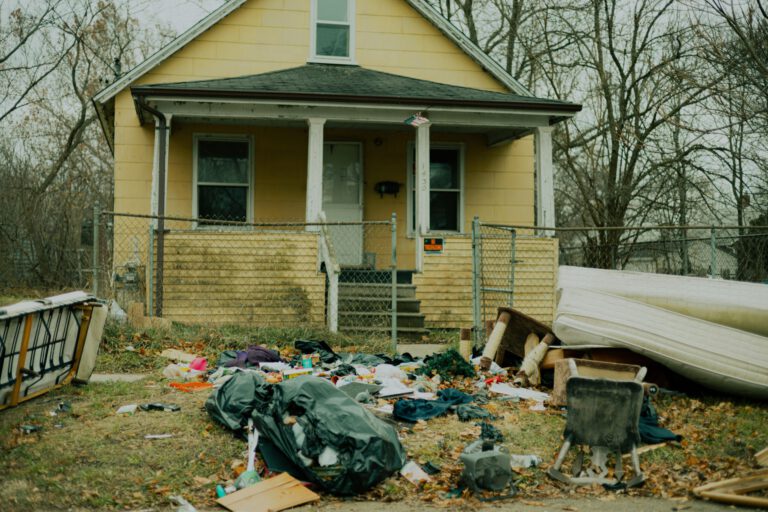What Homeowners Insurance Doesn’t Cover (2025 Edition)
Homeowners insurance is an essential safety net, but many people don’t realize just how many things it doesn’t cover until it’s too late. That sense of security you get from having a policy can be misleading if you don’t read the fine print.
In 2025, as extreme weather, aging homes, and appliance issues become more common, understanding what’s not covered is just as important as knowing what is.
Here’s a comprehensive breakdown of common exclusions in homeowners insurance and what you can do to protect your home and finances.
Flood Damage: A Major Gap in Standard Policies
What’s excluded:
Damage from flooding caused by heavy rain, hurricanes, storm surges, and overflowing rivers or lakes.
Why it matters:
Just one inch of floodwater can cause over $25,000 in damage, according to FEMA. And yet, standard homeowners insurance doesn’t cover it.
How to get protected:
- Purchase flood insurance through the National Flood Insurance Program (NFIP) or a private insurer
- If you live in a moderate-to-high-risk flood zone, it may even be required by your lender
Pro tip:
Use FEMA’s flood map tool to check your property’s flood risk.
Mold and Rot: Often Considered Preventable
What’s excluded:
Mold, fungus, dry rot, and wet rot resulting from long-term moisture or maintenance issues.
What might be covered:
Sudden mold caused by a covered peril, like a burst pipe, may be included but there are often caps (e.g., $5,000 max).
How to get protected:
- Ask your insurer about mold-specific endorsements
- Maintain your HVAC and plumbing systems regularly to avoid moisture buildup
- Use dehumidifiers in humid climates
Important:
Once mold takes hold, remediation costs can skyrocket. Prevention is far cheaper than repair.
Termites and Pest Damage: Totally Excluded
What’s excluded:
Termite damage, rodent infestations, carpenter ants, and other pest-related destruction.
Why it’s not covered:
Insurers consider pest control to be the homeowner’s responsibility and view infestations as preventable with proper upkeep.
How to get protected:
- Schedule annual pest inspections, especially if you live in warmer regions
- Consider a pest control warranty or service plan
- Some home warranties offer limited pest treatment coverage, but it’s not standard
Wear and Tear: The Biggest Catch-All Exclusion
What’s excluded:
Gradual deterioration of your roof, plumbing, wiring, HVAC, and appliances from age or use.
What is covered:
Damage caused by sudden, accidental events not long-term breakdowns.
How to get protected:
- Invest in a home warranty for repair and replacement of aging systems
- Keep maintenance records — insurers often require proof that breakdowns weren’t preventable
- Upgrade major components proactively (e.g., replacing a 20-year-old water heater)
Sewer Backup: Not Always Included
What’s excluded:
Water damage from a backed-up sewer line or drain unless you have a specific rider or endorsement.
The risk:
A backup can flood your basement or bathrooms with raw sewage and standard policies usually don’t cover cleanup or damage.
How to get protected:
- Ask your insurer to add sewer or sump pump backup coverage (often $50–$150/year)
- Install a backflow preventer if your area has frequent backups
Earthquakes and Ground Movement: Usually Not Covered
What’s excluded:
Earthquakes, sinkholes, landslides, and other forms of earth movement.
Coverage options:
- Purchase a separate earthquake policy (especially in states like California or Washington)
- In some states (like Florida), sinkhole coverage is available as an endorsement
Important note:
Damage from a quake-triggered fire may be covered but the quake damage itself won’t be, unless you have an earthquake policy.
Luxury Items and High-Value Personal Property
What’s excluded:
Full replacement value of expensive jewelry, collectibles, fine art, or electronics above your policy’s sub-limits.
Typical limits:
- Jewelry: $1,500
- Electronics: $2,500
- Firearms: $2,000
How to get protected:
- Add scheduled personal property coverage (also called a rider or floater)
- Get items appraised and provide documentation to your insurer
Appliance Breakdowns: Rarely Covered
What’s excluded:
Malfunction or mechanical failure of appliances like refrigerators, ovens, washing machines, etc., due to age or wear.
What is covered:
Damage caused by an appliance like a dishwasher leak that ruins your flooring may be covered. But fixing the dishwasher itself? That’s on you.
How to get protected:
- Consider a home warranty or appliance insurance plan
- Some warranties also offer coverage for electronics and HVAC systems
Negligence and Improper Maintenance
What’s excluded:
Claims that result from lack of upkeep or homeowner negligence like ignoring a roof leak or not clearing clogged gutters.
Why it’s important:
Insurers can deny claims if you failed to take reasonable steps to maintain your property, even if the damage would otherwise be covered.
Prevention tips:
- Perform seasonal maintenance (roof, HVAC, gutters)
- Fix small issues before they become big problems
- Document repairs and routine service checks
War, Nuclear Hazards, and Government Seizure
What’s excluded:
Yes, these are in every homeowners policy typically under “General Exclusions.”
While rare, these include:
- Acts of war or terrorism
- Nuclear accidents
- Property taken by the government (eminent domain)
While not likely, they’re technically on the exclusion list, so it’s worth noting.
Supplemental Coverage Options Worth Considering
To fill the gaps in your standard homeowners policy, look into the following add-ons or alternatives:
| Gap in Coverage | Recommended Protection |
|---|---|
| Flood damage | NFIP or private flood insurance |
| Earthquakes | Earthquake policy or endorsement |
| Sewer backups | Sewer/sump pump backup rider |
| Mold damage | Mold remediation endorsement |
| Appliance breakdowns | Home warranty or appliance protection |
| Termite/pest issues | Annual pest service or treatment plan |
| Luxury items | Scheduled personal property coverage |
Final Thoughts: Know What’s Missing — Then Fill the Gaps
Homeowners insurance isn’t designed to cover everything it’s meant to protect you from large, unexpected losses, not routine repairs or foreseeable issues. Knowing what’s excluded lets you build a more complete protection plan for your home.
Whether that means adding endorsements, shopping for separate flood insurance, or layering on a home warranty, the goal is the same: peace of mind.
Next up: Is Appliance Insurance Better Than a Home Warranty?
Not sure which one’s right for your home? This guide breaks down the pros and cons of appliance-specific protection vs. full-system home warranties.




